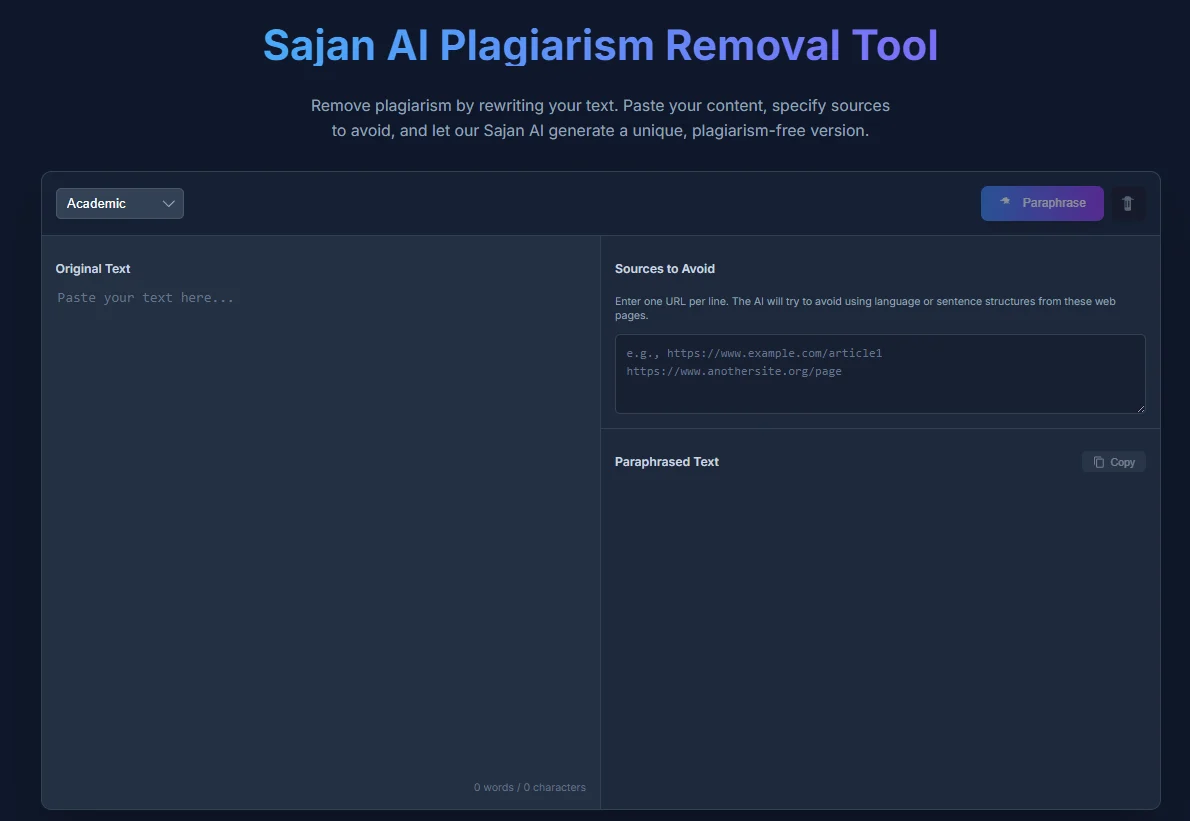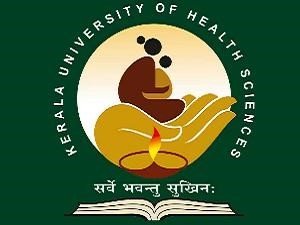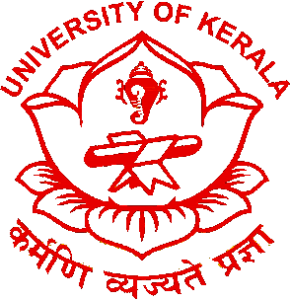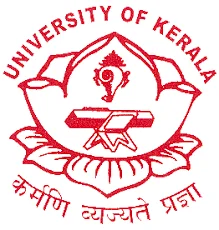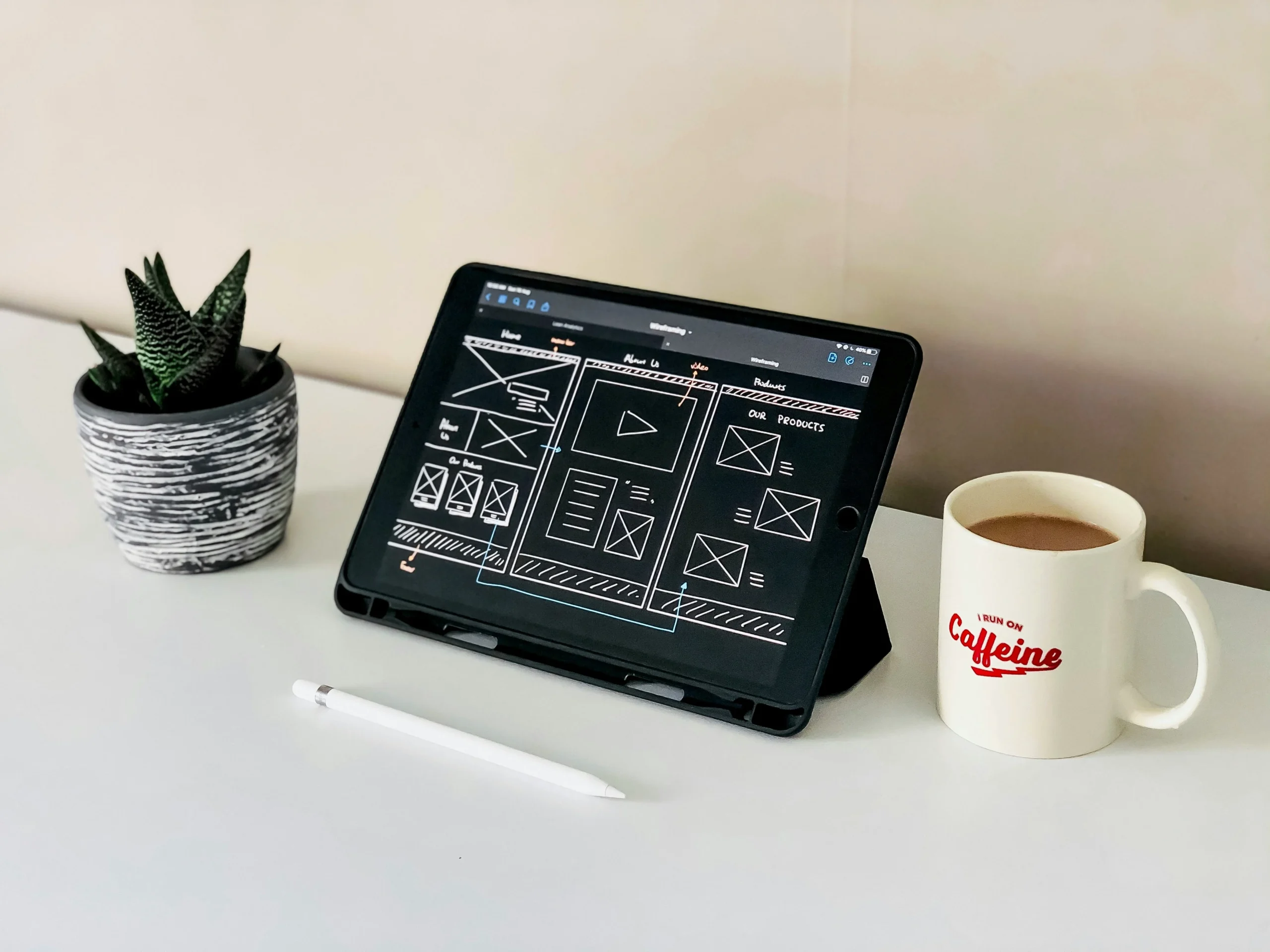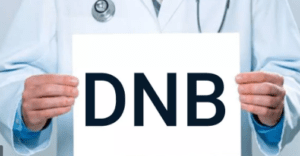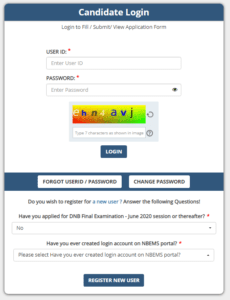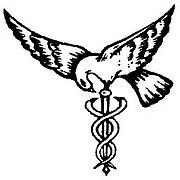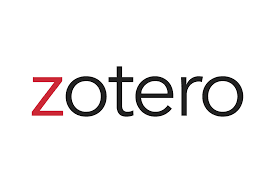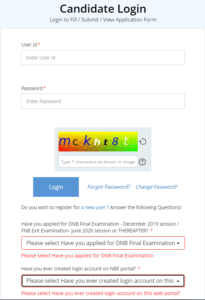Table of Contents
ToggleGUIDELINES FOR DNB THESIS PROTOCOL & THESIS SUBMISSION
The guidelines for DNB Thesis writing & submission are given below:
For more details you can check in National Board Website
Free Download:
Annexure Publication
Thesis Summary Demo file
Declaration cum Undertaking for Fresh Thesis
Covering letter to NBE
Declaration cum Undertaking for Modified Thesis
I. INTRODUCTION
- The DNB/DrNB Trainees are required to submit a thesis at the prescribed time line and as per the rules and regulations of NBEMS.
- Research shall form an integral part of the education programme of all trainees registered for DNB/DrNB degrees of NBEMS.
- The basic aim of requiring the trainees to write a thesis/dissertation is to familiarize him/her with research methodology.
- The members of the faculty guiding the thesis/dissertation work for the candidate shall ensure that the subject matter selected for the thesis/dissertation is feasible, economical and original.
II. GUIDELINES FOR THESIS PROTOCOL
The protocol for a research proposal (including thesis) is a study plan, designed to describe the background, research question, aim and objectives, and detailed methodology of the study. In other words, the protocol is the ‘operating manual’ to refer to while conducting a particular study.
The candidate should refer to the NBEMS guidelines for preparation and submission of thesis protocol before the writing phase commences. The minimum writing requirements are that the language should be clear, concise, precise and consistent without excessive adjectives or adverbs and long sentences. There should not be any redundancy in the presentation
The development or preparation of the Thesis Protocol by the candidate will help her/him in understanding the ongoing activities in the proposed area of research. Further it helps in creating practical exposure to research and hence it bridges the connectivity between clinical practice and biomedical research. Such research exposure will be helpful in improving problem solving capacity, getting updated with ongoing research and implementing these findings in clinical practice.
Research Ethics: Ethical conduct during the conduct and publication of research is an essential requirement for all candidates and guides, with the primary responsibility of ensuring such conduct being on the thesis guide. Issues like Plagiarism, not maintaining the confidentiality of data, or any other distortion of the research process will be viewed seriously. The readers may refer to standard documents for the purpose.
III. PROTOCOL REQUIREMENTS
- The thesis protocol should be restricted to the following word limits:
- It is mandatory research work to have Ethics committee approval before initiation of the research work.
- The concerned NBEMS accredited hospital shall be required to evaluate the thesis protocol at its own level through Institutional Ethics Committee (IEC) and approve the thesis protocol for carrying out the . The constitution of Institutional Ethics Committee has to be in accordance with the guidelines prescribed by NBEMS.
- After the thesis protocol has been assessed and evaluated by Institutional Ethics Committee and has been approved for carrying out the research work, the same has to be submitted to NBEMS by the concerned hospital as per format specified in Annexure – Thesis Protocol Approval (TPA).
IV. TIMELINE FOR PROTOCOL SUBMISSION
The following penal provisions shall be levied on trainees who fail to comply with the aforementioned timelines
Note: The above indicated timelines and penal provisions shall be applicable for trainees getting registered from July 2020 admission session onwards.
V. CONSTITUTION OF INSTITUTIONAL ETHICS COMMITTEE:
- The accredited hospital should have an Ethics Committee (EC) which is Multidisciplinary and multi-sectorial in composition. The Institutional Ethics Committee (IEC) shall review all ethical aspects of the project proposals received by it from DNB/DrNB trainees in an objective manner & shall provide advice to researchers on all aspects of the welfare and safety of all the concerned after ensuring the scientific soundness of the proposed research through appropriate Scientific Review Committee.
- The accredited hospital / institute is required to have an Institutional Ethics Committee (IEC) as per Notification issued by the Department of Health Research, Ministry of Health and Family Welfare, Govt. of India vide Notice No. U-11024/01/2018-HR (Part-2)/8015255 dated 12th September, 2019. It should be registered with the National Ethics Committee Registry for Biomedical and Health Research (NECRBHR) through their website www.naitik.gov.in.
- Ethics Committee Role: It is necessary for all research proposals on biomedical, social and behavioural science research for health involving human participants, their biological material and data to be reviewed and approved by an appropriately constituted EC to safeguard the dignity, rights, safety and well- being of all research
- Ethics Committee Responsibility: The institution is responsible for establishing an EC to ensure an appropriate and sustainable system for quality ethical review and monitoring. The EC is responsible for scientific and ethical review of research proposals. ECs are entrusted with the initial review of research proposals prior to their initiation, and also have a continuing responsibility to regularly monitor the approved research to ensure ethical compliance during the conduct of research. The EC should be competent and independent in its functioning.
- Terms of Reference (TOR) for Ethics Committee: Every EC should have written SOPs according to which the committee should function. The EC can refer to ICMR guidelines in preparing the SOPs for all biomedical and health
- Composition of Ethics Committee:
- ECs should be multi-disciplinary and multi-sectoral.
- There should be adequate representation of age and
- Preferably 50% of the members should be non-affiliated or from outside the
- The number of members in an EC should preferably be between 8 – 15 and a minimum five members should be present to meet the quorum of
- The EC should have a balance between medical and non-medical members/technical and non-technical members, depending upon the needs of the institution.
The composition may be as follows:
- Chairperson
- One – two persons from basic medical science area
- One – two clinicians from various Institutes
- One legal expert or retired judge
- One social scientist/ representative of non-governmental voluntary agency
- One philosopher / ethicist/ theologian
- One lay person from the community
- Member Secretary
- In case the institution does not have an Institutional Ethics registered with NECRBHR, the accredited hospital may tie institution to utilise its NECRBHR registered A Committee (IEC) up with a nearby Memorandum of Understanding in this regard shall be required to be submitted to Accreditation Department of NBEMS.
VI. THESIS WRITING GUIDELINES
- The proposed study must be approved by the Institutional Ethics
- The thesis should be restricted to the size of 80 pages (maximum). This includes the text, figures, references, annexure, and certificates etc. It should be printed on both sides of the page and every page has to be numbered. Do not leave any page blank. To achieve this, following points may be kept in view:
- Typewriting of the Thesis work should always be done on an A4 size sheet having dimensions 21cm X 7 cm.
- The thesis should be typed in 5 space using a clear and vi id font, preferably, Times New Roman/Arial/ Garamond size 12 font, 1” margins should be left on all four sides. Major sections viz., Introduction, Review of Literature, Aim & Objectives, Material and Methods, Results, Discussion, References.
- Appendices should start from a new
- Study proforma (Case record form), informed consent form, master chart and patient information sheet may be printed in single
- Only contemporary and relevant literature may be Restrict the introduction to 2 pages, Review of literature to 10-12 pages, and Discussion to 8- 10 pages.
- The techniques may not be described in detail unless any modification/innovations of the standard techniques are used and reference(s) may be
- Illustrative material may be It should be printed on paper only. There is no need to paste photographs separately.
- Use numerals (1,2,3….) at the bottom in the centre of the pages to number all the
- Use roman numerals for the preliminary pages in the lower-case to number front
- All the new chapters to begin from new
- Align all the chapter headings in the
- The displaying page of chapter title must be placed at the beginning of the chapter.
- Always avoid typing any heading near the page bottom or at the end of a
- Title and numbering along with data caption that clearly describes the nature of table and
- Illustrate the caption at the bottom of the table and figure and on the same
- The text description must be above and on the same page related to any table, figure and
- Keep the headings distinct by a larger font as compared to the whole
- Maintain all the headings of the same level by using the same font and
- Keep the headings aligned to the left side as the chapter headings remain in the
- Since most of the difficulties faced by the residents relate to the work in clinical subject or clinically-oriented laboratory subjects, the following steps are suggested:
- The number of cases should be such that adequate material, judged from the hospital attendance/records, will be available and the trainee will be able to collect case material within the period of data collection, i.e. around 6-12 months so that he/she is in a position to complete the work within the stipulated
- The aim and objectives of the study should be well
- As far as possible, only clinical/laboratory data of investigations of patients or such other material easily accessible in the existing facilities should be used for the
- Technical assistance, wherever necessary, may be provided by the department
- concerned. The resident of one specialty taking up some problem related to some other specialty should have some basic knowledge about the subject and he/she
- should be able to perform the investigations independently, wherever some
- specialized laboratory investigations are required a co-guide may be co-opted from the concerned investigative department, the quantum of laboratory work to be carried out by the trainee should be decided by the guide & co-guide by mutual consultation.
- The clinical residents are not ordinarily expected to undertake experimental work or clinical work involving new techniques, not hitherto perfected OR the use of chemicals or radioisotopes not readily They should; however, be free to enlarge the
- scope of their studies or undertake experimental work on their own initiative but all
- such studies should be feasible within the existing facilities.
- The DNB/DrNB residents should be able to freely use the surgical pathology/autopsy data if it is restricted to diagnosis only, if however, detailed historic data are required the resident will have to study the cases himself with the help of the guide/co-guide. The same will apply in case of clinical data.
- Statistical methods used for analysis should be described specifically for each objective, and name of the statistical program used mentioned.
VII. GENERAL LAYOUT OF A DNB/DrNB THESIS:
1. Cover Page or Outer Cover- It should carry the following details:
a. Title of Thesis
b. Trainee’s Name
c. Year of Thesis
d. NBEMS Logo
e. Name of Institute
f. Guide’s Name (Optional)
2. Title- A good title should be brief, clear, and focus on the central theme of the topic; it should avoid abbreviations. The Title should effectively summarize the proposed research and should contain the PICO elements.
3. Declaration- Under the declaration, trainees shall submit the declaration as per format specified for Fresh Thesis or Modified Thesis.
4. Introduction- It should be focused on the research question and should be directly relevant to the objectives of your study.
5. Review of Literature – The Review should include a description of the most relevant and recent studies published on the subject.
6. Aim and Objectives – The ‘Aim’ refers to what would be broadly achieved by this study or how this study would address a bigger question / issue.
7. The ‘Objectives’ of the research stem from the research question formulated and should at least include participants, intervention, evaluation, design.
8. Material and Methods- This section should include the following 10 elements: Study setting (area), Study diagnostic accuracy,duration; Study design (descriptive, case-control, cohort, experimental (randomized/non-randomized)); Study sample (inclusion/exclusion criteria, method of selection), Intervention, if any, Data collection, Outcome measures (primary and secondary), Sample size, Data management and Statistical analysis, and Ethical issues (Ethical clearance, Informed consent, trial registration).
9. Results- Results should be organized in readily identifiable sections having correct analysis of data and presented in appropriate charts, tables, graphs and diagram etc.
10. Discussion- It should start by summarizing the results for primary and secondary objectives in text form (without giving data). This should be followed by a comparison of your results on the outcome variables (both primary and secondary) with those of earlier research studies.
11. Summary and Conclusion- This should be a précis of the findings of the thesis, arranged in four paragraphs: (a) background and objectives; (b) methods; (c) results; and (d) conclusions. The conclusions should strictly pertain to the findings of the thesis and not outside its domain.
12. References- Relevant References should be cited in the text of the protocol (in superscripts).
13. Appendices- The tools used for data collection such as questionnaire, interview schedules, observation checklists, informed consent form (ICF), Master Chart, participant information sheet (PIS) and Thesis Protocol Approval should be attached as appendices.
VIII. GUIDELINES FOR SUBMISSION OF MODIFIED THESIS
1. Thesis must be modified strictly in accordance with the observation made by the assessor.
2.Modified thesis should be hard bound and the front cover page should be printed in the standard format. However, it should be labeled as MODIFIED THESIS.
3. A hard bound thesis should be accompanied with:
a. A summary of thesis and modification incorporated.
b. Print out of online application form duly signed and stamped by all mentioned authorities
4. A declaration of thesis work “title” being bonafide in nature and done by the trainee himself at the institute of DNB/DrNB training need to be submitted bound with modified thesis. The certificate must specify that thesis have been modified as per suggestion of the assessor. This certificate must be signed by the trainee himself/herself, the thesis guide and head of the institution, failing which thesis shall not be considered.
5. Modifications done in the thesis should be appropriately flagged.
6. Modified thesis is required to be submitted within 6 weeks of issuance of the communication.
IX. INFORMATION FOR CANDIDATES
- As per NBEMS norms, writing a thesis is essential for all DNB/DrNB trainees towards partial fulfillment of eligibility for award of DNB/DrNB
- Application for assessment of thesis (Fresh/modified) can be submitted online only through National Board of Examinations in Medical Sciences website natboard.edu.in. There is no other method for application submission. Application submitted through any other mode shall be summarily rejected.
- DNB/DrNB Trainees are advised to go through these guidelines carefully before submission of the Thesis and filling the application
- The trainee should ensure that all the information entered during the online submission of application form is correct and factual. Information provided by the trainee in the online application form shall be treated as correct and NBEMS will not entertain, under
- any circumstances, any request for change in the information provided by the candidates.
- NBEMS itself does not edit /modify/alter any information entered by the trainees at the time of online submission of application form under any circumstances. There is no provision of change in any Such requests shall not be entertained.
- All the correspondence through post should be addressed to the Executive Director, National Board of Examinations in Medical Sciences, Medical Enclave, MahatmaGandhi Marg, Ansari Nagar, New Delhi-110029. Candidates are requested to superscribe the envelope with the subject matter of the correspondence for expeditious processing.The jurisdiction for court cases/disputes shall be at New Delhi only.
- General Instructions:
- Incomplete submission forms will not be considered
- Online application available at https://natboard.edu.in/thesisonline/index
- Along with your thesis, send the summary of your thesis as per the earlier format in hard copy. Soft copy for thesis has to be uploaded on website.
- Declaration that, the Thesis & Research work “Title” is ‘bonafide’ in nature, and has been carried out by the DNB/DrNB Trainee, need to be submitted bounded with the Thesis. This declaration is to be signed by the Trainee, Guide, Co-Guide (if any) and the Head of the Institution, with rubber-stamp.
- Any change in your correspondence address after submission of thesis should be intimated to NBEMS at email thesis@natboard.edu.in so as to affect timely dispatch of the outcome for your thesis assessment and other Communications.
X. TIMELINE FOR THESIS SUBMISSION
- The following timelines are to be followed for submission of thesis:
2.The following penal provisions shall be levied on trainees who fail to comply with the aforementioned timelines:
Note: The above indicated timelines and penal provisions shall be applicable for trainees with immediate effect and shall be applicable on all admission sessions.
XI. THESIS ASSESSMENT FEE
- Fees for Thesis Assessment is as follows:
*(Payment Gateway Charges as applicable shall be levied using a credit or debit card issued by banks in India or through Internet banking.)
- Trainees who fail to submit their Thesis by the cutoff date shall be allowed to submit their Thesis with a late fee of 10,000/- for upto one month after the scheduled cut off.
- In case the trainee fails to submit the thesis even after then, they shall loose eligibility for the respective DNB/DrNB Final Examination and will have to abide by the cut off for next session of examination if they wish to appear.
XII. THESIS SUBMISSION TO NBEMS
Thesis should be bound and the front cover page should be printed in the standard A bound thesis should be accompanied with:
- Print out of online application form duly signed and stamped by all mentioned authorities
- Synopsis of thesis
- Copy of letter of registration with NBEMS
- Thesis Protocol Approval
- Annexure
A declaration of thesis work being bonafide in nature and done by the trainee himself/herself at the institute of DNB/DrNB training need to be submitted bound with thesis for Fresh Thesis or Modified It must be signed by the trainee himself/herself, the thesis guide and head of the institution, failing which thesis shall not be considered.
XIII. COMMUNICATION PROTOCOL
- For inquiries pertaining to thesis, you may write to thesis@natboard.edu.in.
- Following Information must be provided in queries addressed to National Board of Examinations in Medical Sciences regarding Thesis Status:
- Name
- Subject
- Registration Number
- Date of submission of thesis
*Queries sent without aforesaid information shall not be entertained.
- No inquiries regarding thesis assessment status prior to 4 months after thesis submission will be entertained.
- Queries shall not be entertained from persons claiming themselves to be representative, associates or officiates of the applicant candidate.
- Mention your Name, Subject, Registration and Date of submission of thesis in any correspondence pertaining to thesis with NBEMS.



